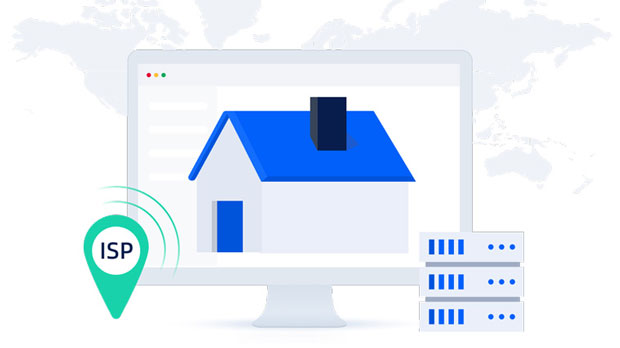socks5 proxy is a versatile and powerful network protocol that allows users to route their internet traffic through a proxy server, enabling privacy, security, and bypassing regional restrictions. It is an upgraded version of the SOCKS protocol, offering enhanced functionality, including better handling of different types of network traffic and support for authentication. Proper configuration of SOCKS5 proxy is crucial for optimal performance and security. In this article, we will dive deep into what SOCKS5 is, how it differs from other proxy types, and provide step-by-step guidance on configuring socks5 proxies correctly for your network. What is a SOCKS5 Proxy?SOCKS5 stands for "Socket Secure version 5" and is an internet protocol that facilitates routing of network traffic between a client and a server through an intermediary, or proxy server. Unlike traditional proxies that only relay HTTP traffic, SOCKS5 proxy supports a wide range of protocols and traffic types, including FTP, POP3, and SMTP. This makes it a highly flexible solution for various internet activities such as browsing, file sharing, and online gaming.The SOCKS5 protocol works by forwarding data packets between a client and a server, essentially acting as a middle layer that hides the user's real IP address. The protocol itself doesn't modify the data being transmitted; it simply helps route it through an intermediary server, making it difficult to trace the origin of the traffic.SOCKS5 vs. SOCKS4: Key DifferencesIt’s important to understand the key differences between SOCKS5 and its predecessor, SOCKS4. While both protocols provide a similar function, SOCKS5 is much more robust and secure. Below are the primary differences:- Authentication: SOCKS5 supports authentication, meaning users can protect their proxy with a username and password. This adds an extra layer of security compared to SOCKS4, which does not support authentication.- IPv6 Support: SOCKS5 supports IPv6 addressing, whereas SOCKS4 is limited to IPv4. This makes SOCKS5 more future-proof and suitable for modern internet networks.- Protocol Flexibility: SOCKS5 handles a wider range of protocols (e.g., TCP, UDP), whereas SOCKS4 primarily supports TCP. This gives SOCKS5 the edge when dealing with applications that require real-time data transfer, such as video streaming and gaming.Advantages of Using SOCKS5 ProxyUsing a SOCKS5 proxy has several advantages:- Anonymity and Privacy: By routing traffic through a proxy server, SOCKS5 helps users mask their IP address, making it harder for websites and services to track their browsing activity.- Bypass Geographical Restrictions: SOCKS5 can help users bypass geo-restricted content, such as streaming services or region-locked websites.- Improved Security: SOCKS5 can provide an additional layer of security, especially when used in conjunction with encryption methods like VPNs or SSL connections.- Speed and Performance: SOCKS5 often provides faster speeds compared to other proxies, such as HTTP proxies, because it handles a wide range of traffic types without adding unnecessary overhead.How to Configure SOCKS5 Proxy CorrectlyConfiguring a SOCKS5 proxy involves several important steps to ensure that it functions optimally. Here is a guide to configuring SOCKS5 proxies for your device or application.Step 1: Choose a Reliable socks5 proxy serverBefore configuring SOCKS5, you need to select a reliable proxy server. The SOCKS5 server will act as the intermediary between your device and the internet. Ensure that the server is trustworthy and offers good speed and stability.Step 2: Set Up SOCKS5 Proxy on Your DeviceDepending on your operating system and device, the configuration process may vary. Here’s a general outline for configuring a SOCKS5 proxy on various platforms:- Windows: In Windows, you can configure SOCKS5 proxies in the system settings. Go to "Network & Internet" settings, click on "Proxy," and input the proxy server’s IP address and port. Ensure that the SOCKS5 option is selected, and enter any authentication credentials if required.- MacOS: On a Mac, open "System Preferences," click "Network," and select your active connection. Click on "Advanced," then go to the "Proxies" tab. From here, you can enter your SOCKS5 proxy server information.- Linux: On Linux systems, configure the SOCKS5 proxy in the network settings or through the terminal by modifying proxy settings.- Browsers and Applications: Most modern web browsers (e.g., Chrome, Firefox) and applications (e.g., torrent clients) have built-in support for SOCKS5. Go to the network or connection settings and input the SOCKS5 server’s details.Step 3: Test Your SOCKS5 Proxy ConfigurationAfter configuring your SOCKS5 proxy, it's crucial to test the connection to ensure that it works properly. There are several online tools that allow you to check if your IP address has been successfully masked. You can also try accessing geo-restricted content to see if the proxy is functioning correctly.Step 4: Troubleshooting SOCKS5 Proxy IssuesIf your SOCKS5 proxy isn’t working as expected, here are some common issues to check for:- Incorrect Proxy Address or Port: Double-check the proxy address and port number. Any typo or mistake can result in a failed connection.- Authentication Failure: If the proxy requires authentication, ensure that you’ve entered the correct username and password.- Firewall or Antivirus Blocking the Proxy: Sometimes, firewalls or antivirus software can block SOCKS5 proxy connections. Make sure your firewall settings allow proxy traffic.- Network Configuration Issues: If you're behind a router or corporate network, make sure that the necessary ports are open and there are no restrictions preventing the proxy from working.ConclusionSOCKS5 proxies are a powerful tool for enhancing privacy, security, and bypassing internet restrictions. With support for a variety of protocols and additional features like authentication and IPv6 support, SOCKS5 is one of the most versatile proxy solutions available today. By following the steps above, users can configure their SOCKS5 proxy correctly and enjoy an anonymous and secure browsing experience.Remember that while SOCKS5 proxies offer great advantages, they should always be used responsibly, and it is essential to ensure proper configuration to guarantee security and optimal performance.
Jan 16, 2025





























































